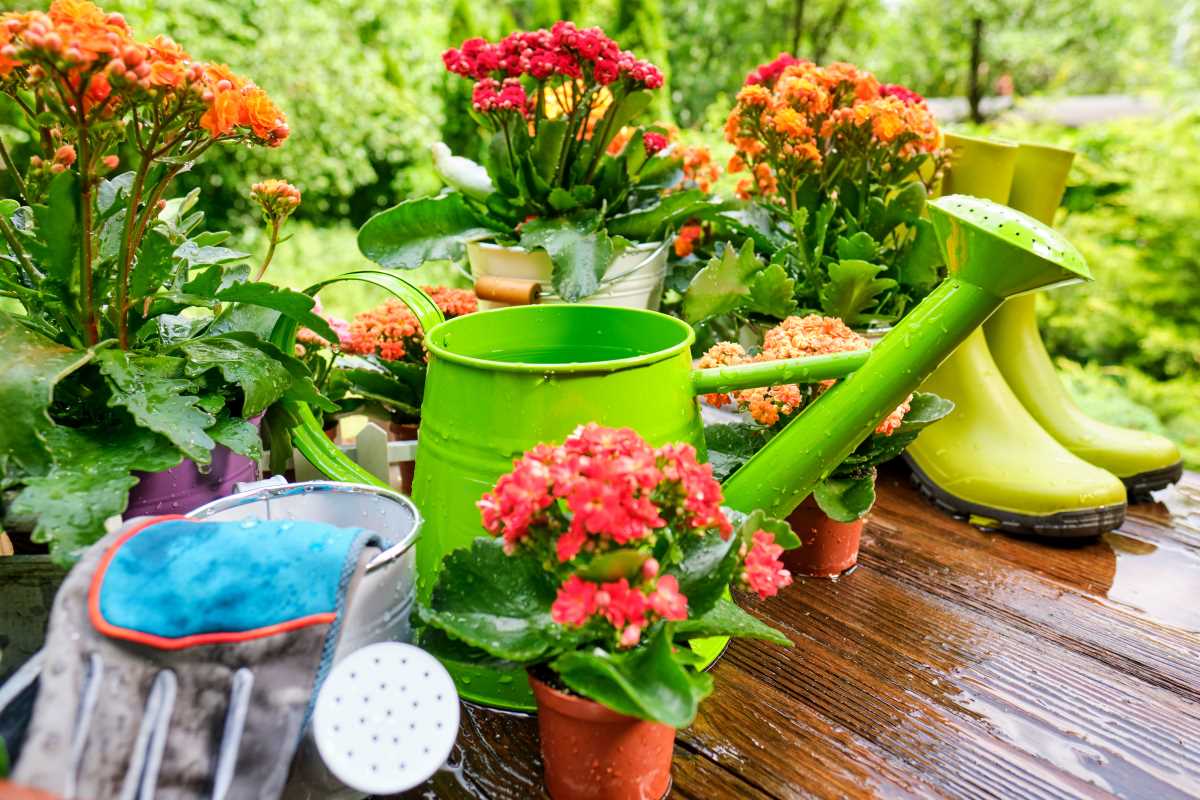In recent years, the conversation surrounding sustainability and eco-friendly practices has grown significantly. As awareness about environmental issues increases, many families are seeking ways to live healthier, more sustainable lifestyles. Green living isn’t just about saving the planet; it’s also about creating a healthier environment for your family. By adopting eco-friendly practices, you can promote well-being, reduce waste, and instill valuable lessons in your children about caring for the Earth.
Understanding Green Living
Green living encompasses a range of practices that minimize environmental impact and promote sustainability. At its core, it involves making conscious choices about the products we use, the foods we eat, and how we consume resources. By adopting eco-friendly habits, families can reduce their carbon footprint, conserve energy, and promote a healthier lifestyle. This commitment to sustainability can also encourage a deeper connection with nature, fostering an appreciation for the environment in children and adults alike.
Benefits of Green Living
Choosing to live sustainably offers numerous benefits beyond environmental impact. First and foremost, eco-friendly practices can lead to improved health. By reducing exposure to harmful chemicals commonly found in household products and promoting a diet rich in whole, organic foods, families can enhance their overall well-being. Sustainable living can also foster a sense of community and connection. Participating in local farmers' markets, community gardens, or eco-friendly workshops can strengthen bonds with neighbors and create a supportive environment.
Embracing green living can lead to financial savings. By reducing waste, conserving energy, and opting for reusable products, families can lower their utility bills and minimize unnecessary spending. Furthermore, instilling sustainable habits in children helps nurture responsible citizens who are mindful of their choices, setting the stage for a more environmentally conscious future.
Eco-Friendly Practices for the Home
Creating an eco-friendly home environment is one of the most impactful ways families can promote sustainability. Here are some practical practices to consider:
- Reduce, Reuse, Recycle: The three R’s are fundamental principles of green living. Begin by reducing waste wherever possible. This might involve purchasing products with minimal packaging or choosing bulk options. Next, find ways to reuse items around the house. For example, glass jars can be repurposed for storage, and old t-shirts can be transformed into cleaning rags. Lastly, make recycling a household habit. Set up designated bins for paper, plastic, and glass, and educate your family on proper recycling practices.
- Choose Eco-Friendly Cleaning Products: Many conventional cleaning products contain harmful chemicals that can negatively impact both health and the environment. Consider switching to eco-friendly cleaning products made from natural ingredients. Alternatively, you can create your own cleaning solutions using simple ingredients like vinegar, baking soda, and lemon. Not only are these options safer for your family, but they also reduce the number of harmful substances entering your home.
- Go Paperless: Transitioning to a paperless lifestyle can significantly reduce waste. Opt for digital statements and receipts whenever possible. Encourage your family to use digital calendars and communication methods. Additionally, consider going paperless with school supplies by utilizing tablets or laptops for note-taking and assignments. If paper is necessary, choose recycled or sustainable options.
- Conserve Energy: Energy conservation is a key aspect of green living. Simple changes can make a big difference. Start by switching to energy-efficient LED light bulbs, which use significantly less energy than traditional bulbs. Encourage your family to turn off lights when leaving a room and unplug electronics when not in use to avoid phantom energy consumption. Implementing a programmable thermostat can also help regulate heating and cooling, reducing energy costs.
- Embrace Sustainable Decor: When it comes to decorating your home, consider sustainable materials. Look for furniture and decor made from reclaimed wood, bamboo, or recycled materials. Additionally, choose non-toxic paint and finishes to improve indoor air quality. Incorporating plants into your home not only enhances aesthetics but also purifies the air and contributes to a healthier living environment.
Eco-Friendly Practices in the Kitchen
The kitchen is often the heart of the home, making it a prime area for implementing green practices. Here are some ways to make your kitchen more eco-friendly:
- Choose Local and Organic Foods: Support local farmers and reduce your carbon footprint by purchasing locally-grown and organic foods. Visit farmers' markets or join a community-supported agriculture (CSA) program. Organic foods are typically grown without harmful pesticides and synthetic fertilizers, making them a healthier option for your family. By choosing seasonal produce, you’ll not only enjoy fresher flavors but also help minimize the environmental impact associated with long-distance transportation.
- Minimize Food Waste: Reducing food waste is essential for a sustainable kitchen. Plan meals ahead of time and make shopping lists to avoid overbuying. Use leftovers creatively by incorporating them into new meals, and consider composting organic waste. Composting not only reduces landfill waste but also enriches your garden soil, promoting healthy plant growth.
- Use Reusable Containers and Utensils: Invest in reusable containers, utensils, and straws to minimize single-use plastics. Stainless steel or glass containers can be used for meal prep and storage, while cloth napkins can replace paper ones. Encourage your family to carry reusable water bottles to school and outings, reducing the reliance on disposable plastic bottles.
- Implement Energy-Efficient Cooking Practices: Cooking can be energy-intensive, so adopting energy-efficient practices can make a significant impact. Use the appropriate-sized pots and pans for your burners to avoid wasted heat. Consider using a slow cooker or pressure cooker, which can be more energy-efficient than traditional ovens. Whenever possible, prepare larger meals and freeze leftovers to save time and energy.
Sustainable Transportation Practices
Transportation is a significant contributor to carbon emissions. Encouraging eco-friendly transportation habits can help reduce your family's carbon footprint:
- Walk or Bike When Possible: For short distances, consider walking or biking instead of driving. Not only does this reduce carbon emissions, but it also promotes physical activity and family bonding. Encourage your children to join you on walks or bike rides, turning exercise into a fun family outing.
- Use Public Transportation: When longer travel is necessary, explore public transportation options. Buses and trains can significantly reduce the number of vehicles on the road, contributing to lower emissions. Additionally, using public transport can expose your children to new experiences and teach them about community resources.
- Carpool or Share Rides: If driving is unavoidable, consider carpooling with neighbors or friends for school or activities. Sharing rides can reduce the number of cars on the road and lower your family’s carbon footprint. Many communities have ride-sharing programs that facilitate carpooling.
- Choose Fuel-Efficient Vehicles: If your family is in the market for a new vehicle, consider investing in a fuel-efficient or electric car. These vehicles can significantly reduce your carbon emissions and save money on fuel costs over time. If a new vehicle isn’t feasible, regular maintenance and driving practices—such as keeping tires properly inflated and avoiding excessive idling—can improve fuel efficiency.
Creating a Green Family Culture
Instilling eco-friendly values in your family goes beyond practices; it’s about creating a culture of sustainability. Here are some ways to foster this mindset:
- Lead by Example: Children often emulate the behaviors of their parents. By practicing green habits, you’ll set a positive example for your children. Involve them in eco-friendly tasks, such as gardening or recycling, and explain the importance of these actions. Discuss environmental issues openly, encouraging questions and conversations about sustainability.
- Engage in Community Activities: Participating in community clean-up days, tree-planting events, or local environmental workshops can deepen your family’s commitment to sustainability. These activities provide opportunities to learn, connect with others, and contribute positively to your community. They also allow your children to see the impact of collective action on the environment.
- Make Sustainability Fun: Infuse fun into sustainability by incorporating games and challenges. Consider starting a family competition to see who can reduce their waste the most in a week. Create fun educational projects, like building a birdhouse from recycled materials or starting a small vegetable garden. Making sustainability enjoyable can foster a lasting interest in eco-friendly practices.
- Celebrate Earth Day and Other Green Holidays: Use Earth Day and similar observances as an opportunity to teach your children about environmental stewardship. Plan family activities that promote awareness and engagement, such as planting trees, visiting nature reserves, or participating in local eco-events. Celebrating these days can reinforce the importance of caring for the Earth.







